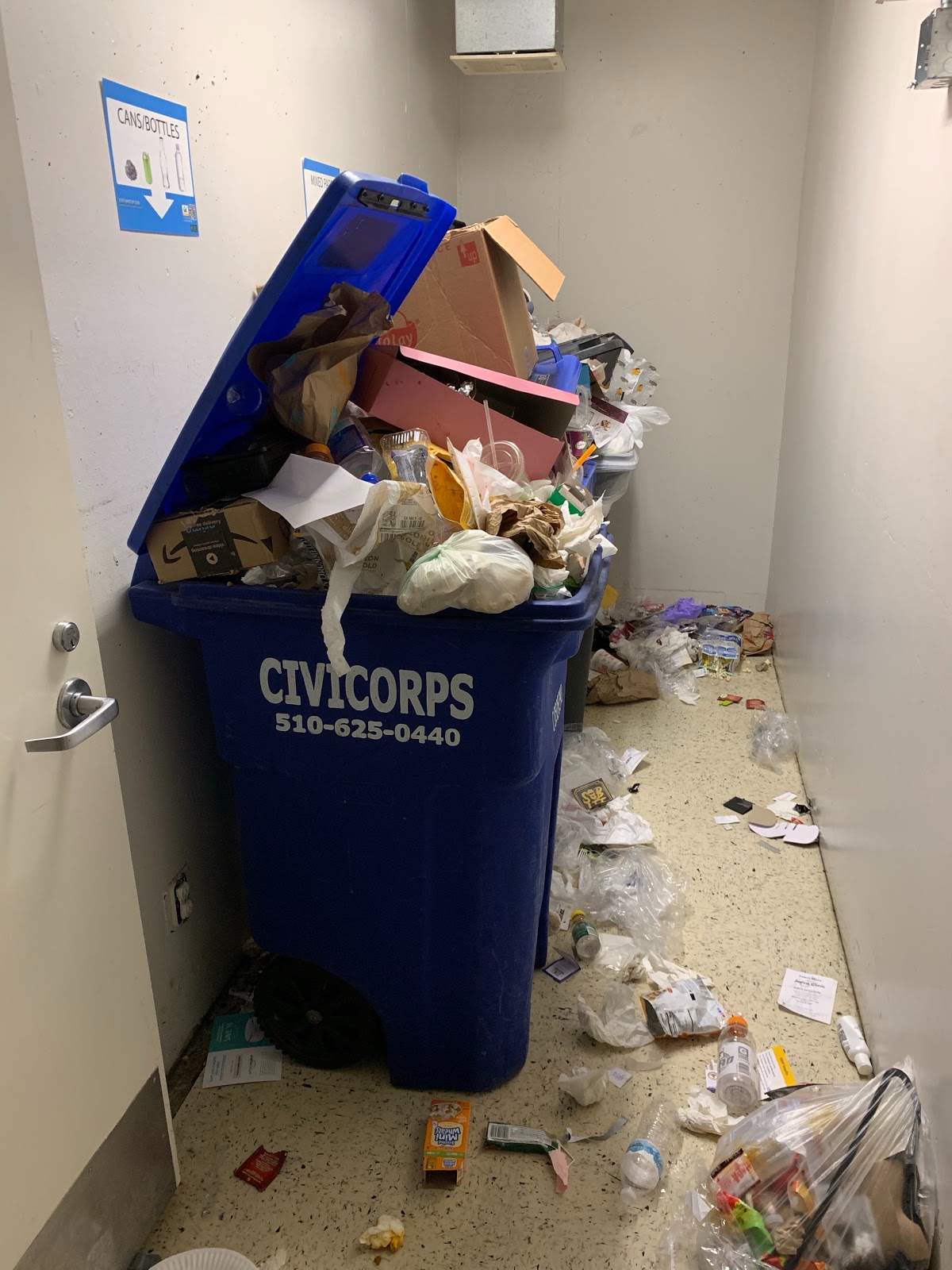Where does our waste *actually* go?
We all know that “Zero Waste by 2020” is right around the corner, yet our trash bins in the residence halls still look like this:
. 
Not good. From this bleak image, Zero Waste by 2020 seems like a distant reality… especially with trash and compost being thrown in the recycling bin. Why hasn’t this issue been solved?
However, before we go into the future of waste at Cal, let’s dive into what’s going on right now. Your trash, whether you are aware of it or not, still exists after you throw it away. Many of us conceptually understand this, but we often don’t think about where our waste actually goes once it’s disposed of– out of sight, out of mind, right?
Students at Cal come from different cultures, backgrounds, and values and with that we bring many different perspectives on how waste should be accumulated, managed, and disposed of. With all these perspectives, it is imperative that we work together to further our goal of “Zero Waste by 2020” and set a uniform standard of waste management.
Did you know that until quite recently, there was no standardized signage on trash bins in the residence halls? Before the standardization of sorting signs and bin collection systems on campus, trash bin signage was very misleading or had very little information on how students should properly manage and sort waste. HADSA (Housing and Dining Sustainability Advocates) has been working on educating and improving waste management in the residence and dining halls. One of the problems addressed in the residence halls, was this lack of appropriate signage, which indirectly led to improper waste sorting and overflowing trash bins. HADSA’s reaction to this was to implement standardized signage to combat the already trashy trash situation. The current goal of standardized signage is to educate and encourage students on how to properly sort their waste and to differentiate between recycling, trash, and even compost! But despite implementing these sorting signs, it can still be a struggle to encourage students to sort their waste — a lot of waste management and efficiency relies on student education and accountability.
Just because that plastic cup may look recyclable, doesn’t necessarily mean that it is! Many times students toss plastics #3, #4, #5, and #6 into the blue bins out of habit, not realizing that those plastics are actually not recyclable. It’s better to toss these plastics into the landfill bins because they will end up being sent to a landfill anyways.
Although signs intend to better waste management at Cal, it still largely relies on student accountability to remain effective. It is our obligation as students to sort and dispose of our waste properly as well as educate each other to promote appropriate waste management practices. A motivated student population at Cal could drastically reduce missorted waste, in turn reducing overflowing trash bins, and our goal of a Zero Waste seems increasingly more promising.
-The Fall 2019 HADSA Interns

